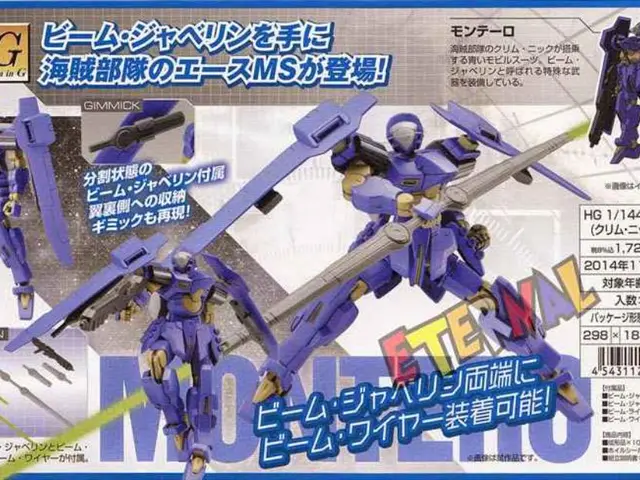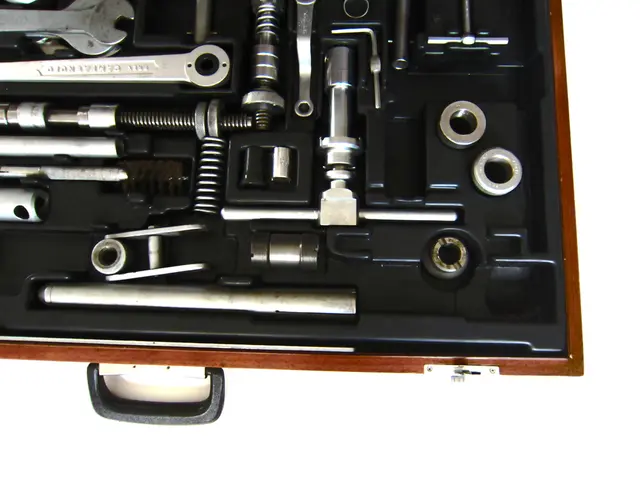Developing Mezzanine Card Technology through Quantum Memory Cell (QMC) Techniques
**New Rugged Mezzanine Standard Revolutionizes High-Speed Embedded Computing**
The VITA 93 QMC, a new rugged small form-factor mezzanine card standard, is set to transform the embedded computing landscape. This compact mezzanine standard, developed by VITA, a non-profit rugged standards organization, is designed for systems requiring high-density I/O and modern high-speed interfaces.
The VITA 93 QMC is a 26 by 78.25 mm single-width module, significantly smaller than previous mezzanine standards such as XMC. It boasts two 80-pin connectors: one for a host interface supporting up to PCI Express Gen 4 x4 (with PCIe Gen6 up to x16 in newer implementations), and one for an I/O interface capable of carrying up to 20 differential or 40 single-ended signals.
The standard's dual interfaces allow simultaneous support for high-speed serial fabrics and versatile I/O signals, enabling flexible connectivity for complex systems. This modular approach increases system design flexibility across various industries, including industrial, aerospace, defense, transportation, and scientific domains.
In industrial automation, daughtercards can be used to add specialized input/output (I/O) capabilities to programmable logic controllers (PLCs). In telecommunications, mezzanine cards are used to add extra ports or processing power to network switches or routers.
The VITA 93 QMC is suitable for deployment in commercial, industrial, space, or military-grade rugged environments with air- or conduction-cooled formats. It supports rugged environments, including conduction-cooled systems with standardized heatsinks, and offers intelligent platform management (IPMI) with sensor data monitoring to ensure reliability in harsh conditions.
The VITA 93 QMC standard provides a secondary I/O interface to support either front-panel or backplane I/O. Multiple modules can be installed on various carrier-card form factors, including 3U/6U Eurocards, VNX+, PCIe expansion cards, and many others. This modularity and scalability make the VITA 93 QMC a versatile solution for a multitude of applications.
The adoption of VITA 93 QMC is poised to enhance flexibility, modularity, and performance in numerous high-tech sectors, driving advances in embedded computing architectures for demanding environments. It represents the next frontier in the evolution of mezzanine cards, offering even greater potential for advances in various industries.
[1] VITA 93 QMC Standard, [www.vita.com/standards/vita-93-qmc](http://www.vita.com/standards/vita-93-qmc) [2] VITA 93 QMC: A New Standard for Rugged Mezzanine Cards, [www.electronicdesign.com/embedded/vita-93-qmc-new-standard-rugged-mezzanine-cards](http://www.electronicdesign.com/embedded/vita-93-qmc-new-standard-rugged-mezzanine-cards) [4] VITA 93 QMC: A Compact Mezzanine Standard for High-Performance Embedded Computing, [www.embedded-computing.com/articles/vita-93-qmc-compact-mezzanine-standard-high-performance-embedded-computing/](http://www.embedded-computing.com/articles/vita-93-qmc-compact-mezzanine-standard-high-performance-embedded-computing/)
The VITA 93 QMC, a new rugged mezzanine standard, leverages advanced data-and-cloud-computing technology to revolutionize high-speed embedded computing, particularly in sectors such as industrial, aerospace, defense, transportation, and scientific domains. This innovative standard is designed to foster scalability and versatility, making it a prime technology solution for a variety of applications.




